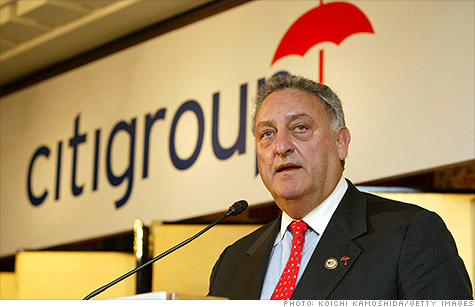At 90 years old and worth an estimated $1 billion, Sanford “Sandy” Weill isn’t just a retired banker—he’s a force who helped shape the modern financial world. Born in Brooklyn and raised with modest means, Weill’s story isn’t about privilege or inheritance. It’s about grit, vision, and calculated risk-taking. His name is forever linked to Citigroup, the financial giant he helped build, but his impact goes far beyond Wall Street. From humble beginnings to a legacy of philanthropy, Sandy Weill’s journey is as rich in lessons as it is in accomplishments.
Where Did It All Begin for Sandy Weill?
Sandy Weill was born on March 16, 1933, in Bensonhurst, Brooklyn, to a family of Polish-Jewish immigrants. Growing up during the tail end of the Great Depression and through World War II, he was no stranger to hardship. His parents emphasized hard work and perseverance, values that would define his career. After graduating from Cornell University in 1955, Weill took his first step into finance with a job as a runner at Bear Stearns. It was the lowest rung on Wall Street’s ladder, but it didn’t take long for him to climb.
What Were the Key Turning Points in His Career?
Weill’s major break came in 1960 when he co-founded Carter, Berlind, Potoma & Weill, a brokerage firm that evolved into Shearson Loeb Rhoades, one of the biggest names on Wall Street. Known for his aggressive acquisition strategies and deal-making savvy, Weill built the firm into a heavyweight. In 1981, he sold Shearson to American Express for $930 million in stock, a move that not only made him immensely wealthy but also gave him a top executive seat at a major financial conglomerate.
He left American Express in the mid-1980s but wasn’t done. In 1986, Weill made a surprising comeback by investing $7 million of his own money into a faltering company called Commercial Credit. Most people wouldn’t take that kind of risk. But Weill saw potential—and turned the company around. This was the beginning of his next empire.
How Did Sandy Weill Build Citigroup from the Ground Up?
What Weill did next was nothing short of revolutionary. Over a series of strategic acquisitions—including Primerica in 1987 and a significant stake in Travelers Insurance—he gradually built a diversified financial services company. The boldest move came in 1998, when he led the $70 billion merger of Travelers Group with Citicorp, forming Citigroup, then the world’s largest financial services company.
This merger did more than make headlines—it directly challenged the Glass-Steagall Act, which separated commercial and investment banking. Though the law was officially repealed a year later, the Citigroup deal pushed boundaries and redefined what a financial institution could be.
Weill served as CEO of Citigroup until 2003 and remained as chairman until 2006. Under his leadership, Citigroup became the blueprint for the modern financial conglomerate.
What Set Weill Apart from Other Wall Street Titans?
While many banking leaders focused on one niche—investment, retail, or insurance—Weill’s genius was in unifying them. He didn’t just grow companies; he reinvented what a financial institution could look like. The “financial supermarket” model he championed brought diverse services under one roof, changing how customers and corporations interacted with banks.
More importantly, Weill didn’t inherit his empire—he built it, piece by piece, often putting his own money on the line. His leadership style was hands-on, his decisions often bold. He wasn’t afraid of calculated risks, and his legacy is proof that big rewards often come from bold vision.
How Has Sandy Weill Used His Wealth for Good?
While many billionaires remain in the limelight for their business moves, Weill shifted focus in his later years to philanthropy. Alongside his wife Joan, he has donated hundreds of millions of dollars to causes ranging from education to healthcare and the arts.
Weill is one of Cornell University’s most prominent benefactors, funding the Weill Cornell Medical College, among other initiatives. He’s also played a critical role in supporting Carnegie Hall and expanding arts accessibility across New York and beyond.
His giving isn’t about vanity—it’s strategic and rooted in a belief that wealth should create lasting, positive change.
What Is Sandy Weill Focused on Today?
Even in his 90s, Weill isn’t completely retired. As Chairman Emeritus of Citigroup, he continues to offer guidance and insights to future business leaders. He’s also involved in philanthropic ventures and global initiatives, such as co-founding the SALT Conference in partnership with the Robin Hood Foundation—an event that gathers world leaders to tackle finance, innovation, and social issues.
He might not be closing billion-dollar deals anymore, but his influence still echoes across boardrooms, classrooms, and cultural institutions.
What Can We Take Away from Sandy Weill’s Story?
Sandy Weill’s life is a masterclass in tenacity, reinvention, and impact. From a working-class kid in Brooklyn to a financial pioneer who helped reshape the global banking landscape, his journey is anything but ordinary. He wasn’t just climbing the ladder—he was building new rungs for others to climb.
For entrepreneurs, finance students, or anyone chasing a big dream, Weill’s story proves that it’s not just about where you begin—it’s about how smartly and fearlessly you navigate the road ahead.
He reminds us that legacy isn’t just defined by wealth—but by the value you create and the lives you touch along the way.







